 Best Practices
Elementary Classrooms
Secondary Classrooms
Elevate Instruction in Spanish Immersion and World Language Classes with CommonLit Español
Best Practices
Elementary Classrooms
Secondary Classrooms
Elevate Instruction in Spanish Immersion and World Language Classes with CommonLit Español
CommonLit Español has over 800 Spanish texts. The library features a variety of literary and informational texts by influential authors and poets like Alma Flor Ada, Federico García Lorca, and Gabriel García Márquez. We also have over 70 Lecciones Guiadas, interactive lessons that ask students to find evidence, write, and collaborate with peers using think and shares and turn and talks.
CommonLit Español’s library can be used in a variety of ways in World Language and Spanish immersion classrooms. These lessons can also supplement learning for heritage speakers and native Spanish speakers, and aid English Language Learners as they develop language skills.
In this blog post, I will explain the ways CommonLit Español’s library can be effectively utilized in your Spanish immersion and World Language classes.
Using CommonLit Español in a Spanish Immersion Classroom
In Spanish Immersion classrooms, Spanish is integrated into the curriculum, with instruction conducted in Spanish. Teachers can use our library lessons and our Lecciones Guiadas throughout the day.
We also have a variety of genres in our CommonLit Español library, including biographies, short stories, poems, informational texts, and more. Science, social studies, and specials teachers in immersion programs can use our library lessons in their classrooms as well.
For example, science teachers can use lessons on climate history, astronomer Nicolas Copernicus, or bacteria. Social studies teachers can implement lessons on prehistoric houses, the Bill of Rights, or Nelson Mandela, to name a few.
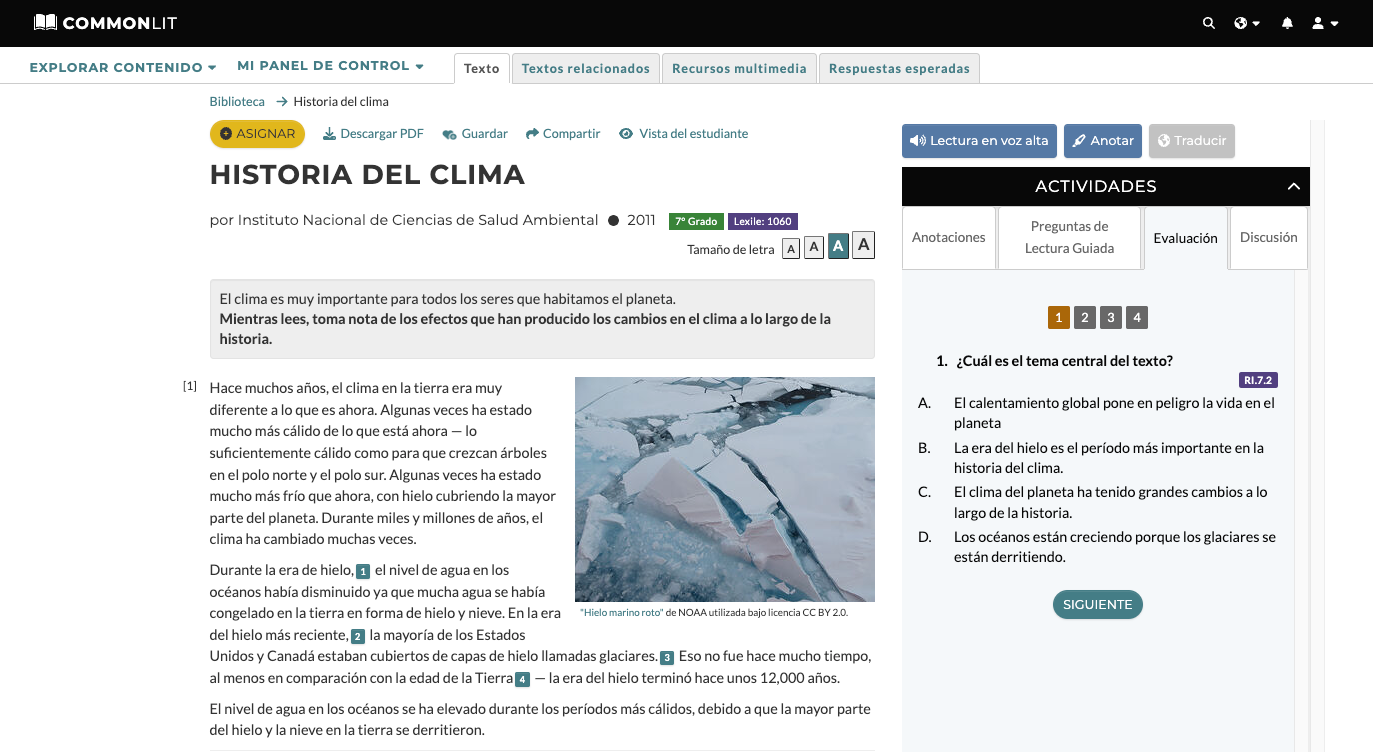
CommonLit Español’s library is an outstanding tool for building cross-language connections. Teachers in immersion programs can use the CommonLit library to teach Spanish by modeling fluent reading using the Read Aloud tool and introducing language structures including cognates and new vocabulary using the glossary for each text. Students can engage in shared reading and structured dialogues using discussion questions that extend understanding of the text and enrich oral and written language.
Teacher-led small groups can use Paired Texts (Textos Relacionados) based on background knowledge or area of interest to allow students opportunities to read, write, speak, and listen across levels related to common themes.
Supplementing World Language Classrooms with CommonLit
The CommonLit Español library is perfect for higher-level Spanish courses in high school. In these courses, teachers can use the CommonLit Español library with minimal adaptations.
Teachers can encourage group reading and purposeful discussions with Lecciones Guiadas and independent reading of library texts with interactive comprehension checks. Our Spanish library lessons include Paired Texts (Textos Relacionados) and Related Media (Recursos Multimedia) to further engage students.
Teachers at all levels benefit from using multimedia resources to add to student comprehension of the text. For example, after reading Bilingüe by Alma Flor Ada, students can read a poem, short story, and biography related to the text. They can also watch a video about the benefits of being bilingual. These lesson extensions come with discussion questions to boost student engagement and help them practice their Spanish-speaking skills.
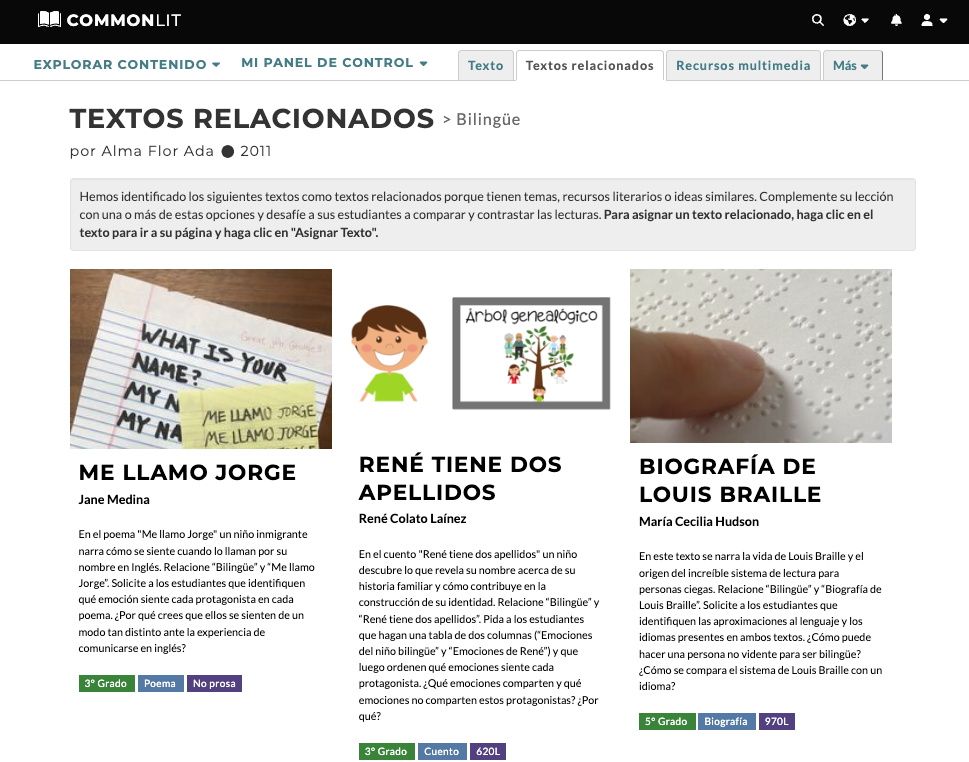
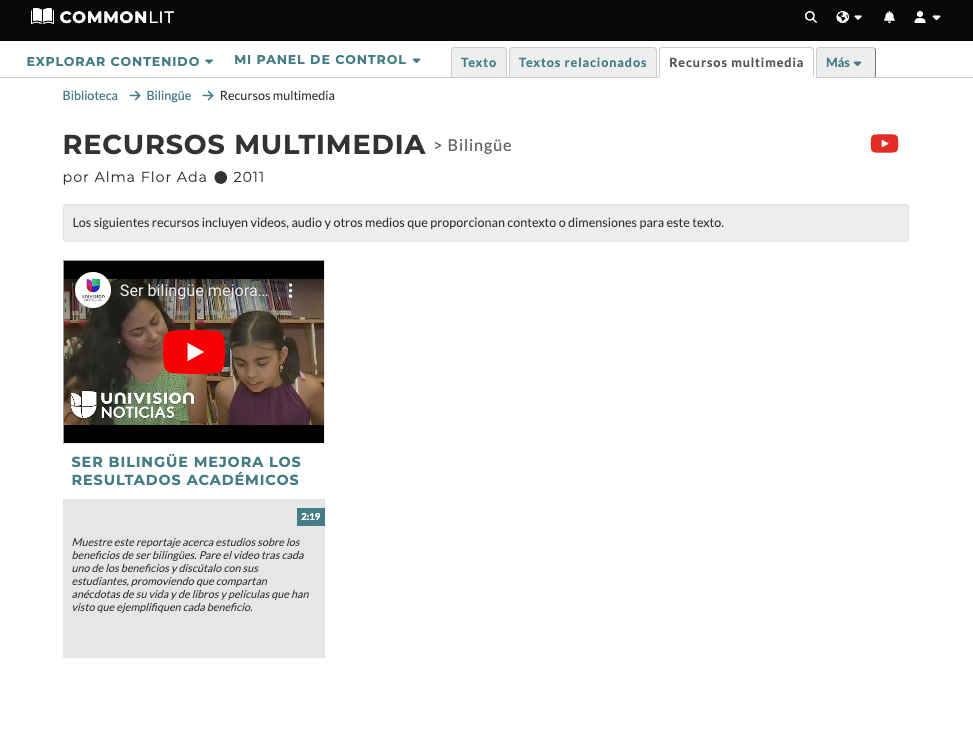
Students in lower-level Spanish classes may need some adaptations to the lessons. This may include whole group reading, utilizing Guided Reading Mode (Preguntas de Lectura Guiada) to check for understanding, completing Assessment Questions (Evaluación) in pairs or small groups, or introducing new vocabulary prior to the first read.
Alternatively, teachers can assign lower-level texts that are below grade level. The grade levels are based on fluent Spanish speakers, so a student in 6th Grade Spanish I may be better suited to read a 3rd Grade text in a whole group assignment, rather than read a 6th Grade text independently. Teachers can flexibly assign different grade levels based on student needs, and provide a rigorous challenge to students who are excelling above grade level expectations.
Implementing CommonLit Español Units in World Language Classrooms
CommonLit provides 21 units (unidades) for Grades 3 to 9. These engaging units include relevant topics like community, sports, identity, animals, and fables. These are perfect mini-units for focusing on a specific topic in a World Language classroom.
In the 3rd Grade unit on fables, students read four fables tied to the Essential Question: “What life lessons do fables teach us?” Students read fables about a toad and a deer, a crow and a pitcher, a lion and a mouse, and a zebra and a wasp. As they read, they answer questions and take notes before completing a final evaluation.
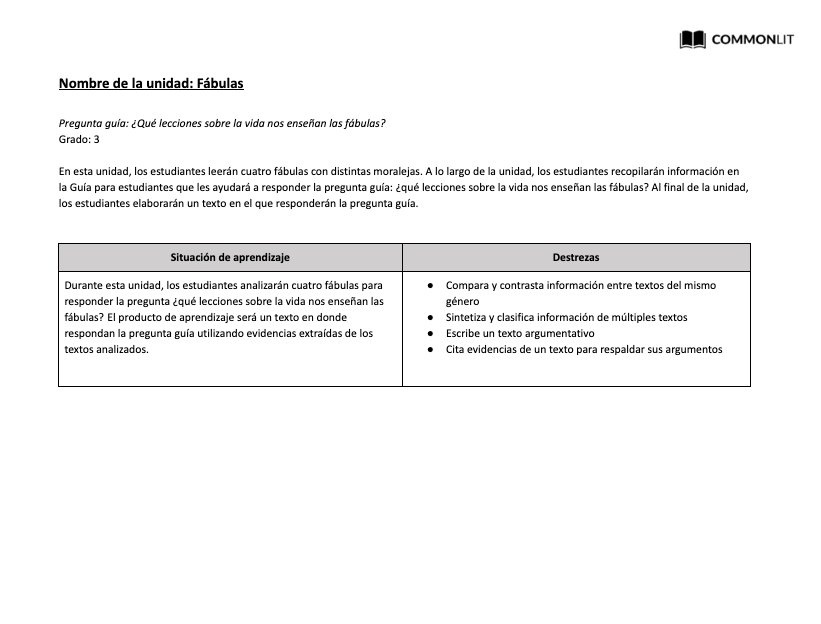
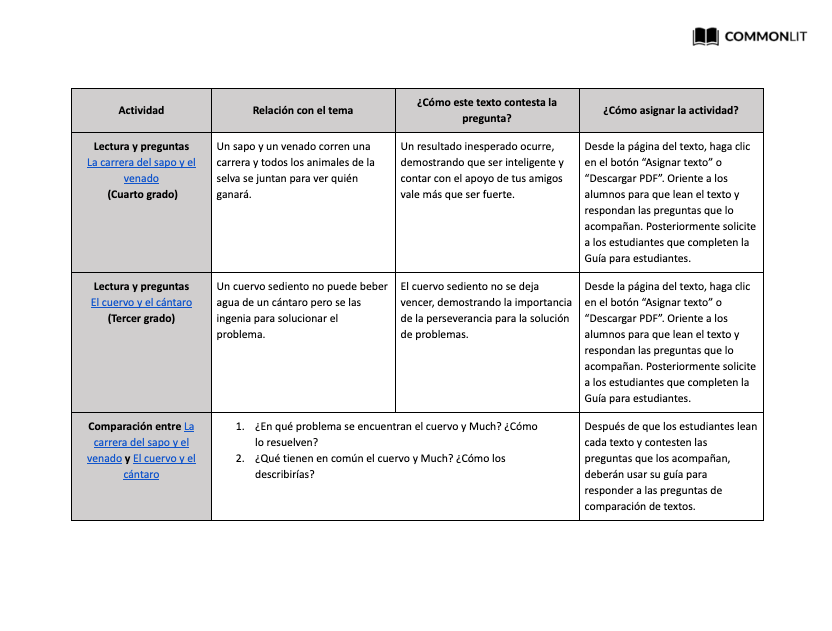
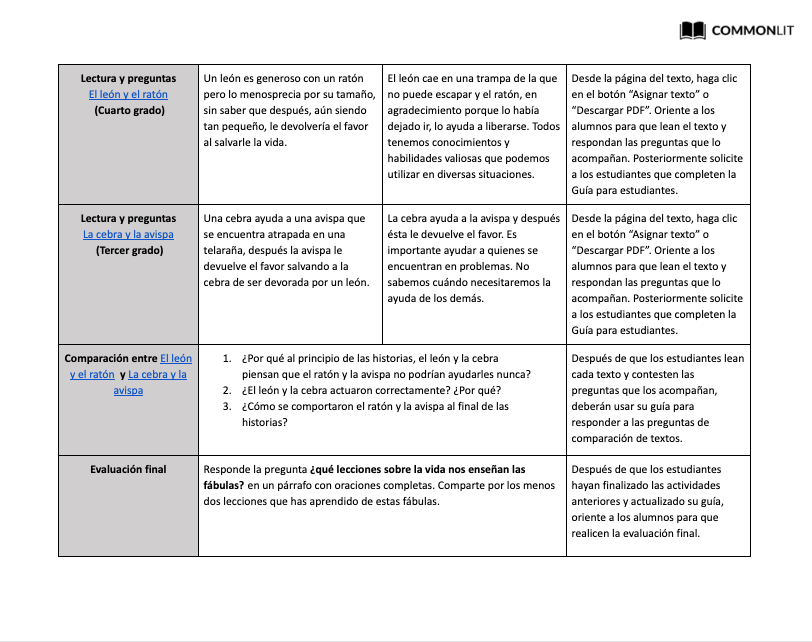
Engaging Native and Heritage Spanish Speakers
Native Spanish speakers are proficient readers and writers in Spanish. Therefore, when placed in World Language classrooms, teachers can provide differentiated instruction that will continue to develop their literacy skills in their first language.
Heritage speakers who grew up in the United States in a Spanish-speaking home may be able to speak Spanish fluently but may not be able to read or write in it. CommonLit Español lessons are an excellent way to develop Spanish literacy skills for these students.
If they are placed in World Language classes with other students learning Spanish, CommonLit can provide differentiation that will make lessons more rigorous for heritage speakers as they learn Spanish language structures and grammar alongside the rest of the class. Their individual work can be at a higher level than the texts other students are using.
Next Steps
Interested in exploring CommonLit Español? Check out our Spanish library here.

